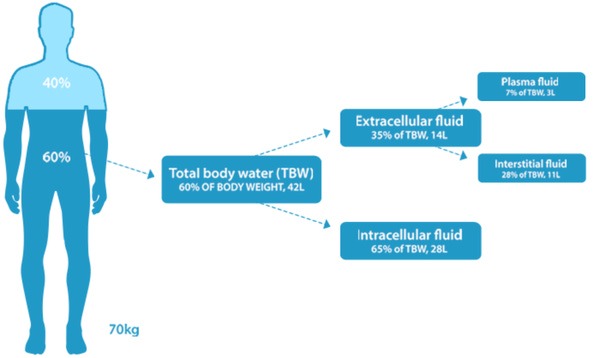
Post-rehabilitation (PR) clients require diligent and scrupulous program design. This population is often deconditioned, consequently decreasing the margin of error and increasing the risk of re-injury. Thus, training requires a sound pragmatic and theoretical approach. Conscientiousness of my clients’ training environment is also part of risk management. I would like to explore the concepts of dehydration, its impact on my clients’ health, and methods to reduce dehydration.

Environmental conditions may often prove difficult to control, such as high temperatures and humidity experienced during a run, or less-than-ideal temperatures and humidity occasionally found in fitness centers. In both cases, these environmental conditions can negatively affect fluid balance and thermoregulation. It behooves us then, to explore those factors that we can control and regulate for our clients.

Water constitutes approximately 60 percent of total body mass and assists in functions such as temperature regulation, joint lubrication, and nutrient transportation (Berardi & Andrews, 2010). Berardi and Andrews (2010) also note that decreases in only 1-2% in body mass can lead to decreases in performance, and further losses (i.e., 6 percent and higher) can lead to heatstroke, coma, and even death. Fluid balance then, is important for both a client’s recovery and ability to train in a safe and efficient manner.

Fluid balance is defined as fluid input equaling fluid output (Berardi & Andrews, 2010). This state is the most ideal but does fluctuate depending on several factors such as activity level, humidity, temperature and proper hydration. One method Berardi and Andrews (2010) suggests is to consume 30-40 ml of water per kilogram of bodyweight. For example, if a person weighed 50kg (110lbs) they would require 1.5-2.0 L of water per day. To help track how much fluids are consumed, one idea might be to fill up bottles of water in advance to the amounts required for the day. In this way, clients will be able to know precisely how much has been consumed.
Proper hydration and nutrition can be an overlooked and poorly mismanaged component in PR. Helping clients understand the role of fluid balance and proper hydration can in part, control the deleterious effects of harsher environments that they train and live in while maximizing their rate of recovery from injury.
References
Berardi, J., & Andrews, R. (2010). The essentials of sport and exercise nutrition: Certification manual (1rst ed.). Toronto, ON: Precision Nutrition Inc.
-Michael McIsaac
